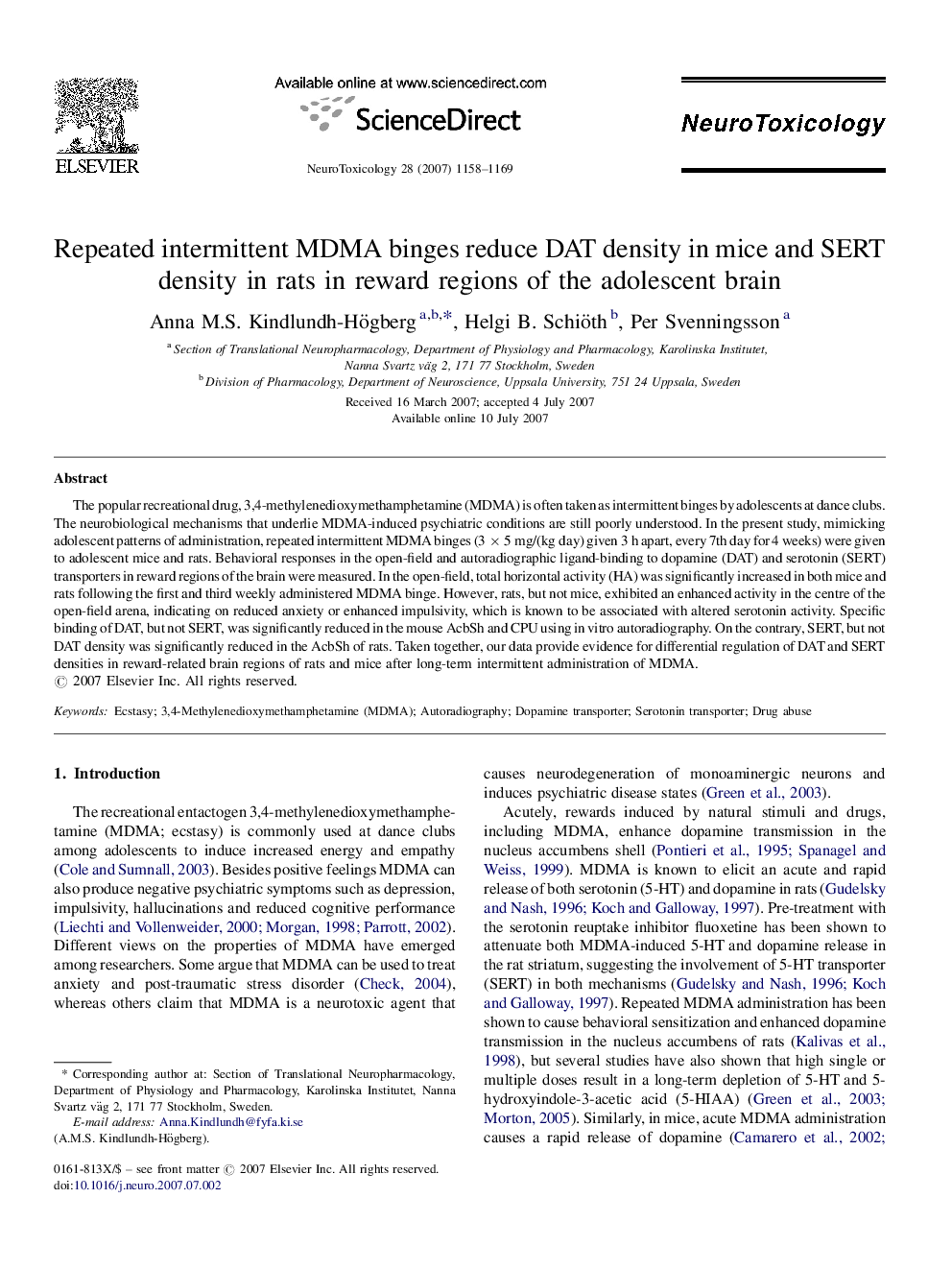| Article ID | Journal | Published Year | Pages | File Type |
|---|---|---|---|---|
| 2590372 | NeuroToxicology | 2007 | 12 Pages |
The popular recreational drug, 3,4-methylenedioxymethamphetamine (MDMA) is often taken as intermittent binges by adolescents at dance clubs. The neurobiological mechanisms that underlie MDMA-induced psychiatric conditions are still poorly understood. In the present study, mimicking adolescent patterns of administration, repeated intermittent MDMA binges (3 × 5 mg/(kg day) given 3 h apart, every 7th day for 4 weeks) were given to adolescent mice and rats. Behavioral responses in the open-field and autoradiographic ligand-binding to dopamine (DAT) and serotonin (SERT) transporters in reward regions of the brain were measured. In the open-field, total horizontal activity (HA) was significantly increased in both mice and rats following the first and third weekly administered MDMA binge. However, rats, but not mice, exhibited an enhanced activity in the centre of the open-field arena, indicating on reduced anxiety or enhanced impulsivity, which is known to be associated with altered serotonin activity. Specific binding of DAT, but not SERT, was significantly reduced in the mouse AcbSh and CPU using in vitro autoradiography. On the contrary, SERT, but not DAT density was significantly reduced in the AcbSh of rats. Taken together, our data provide evidence for differential regulation of DAT and SERT densities in reward-related brain regions of rats and mice after long-term intermittent administration of MDMA.
